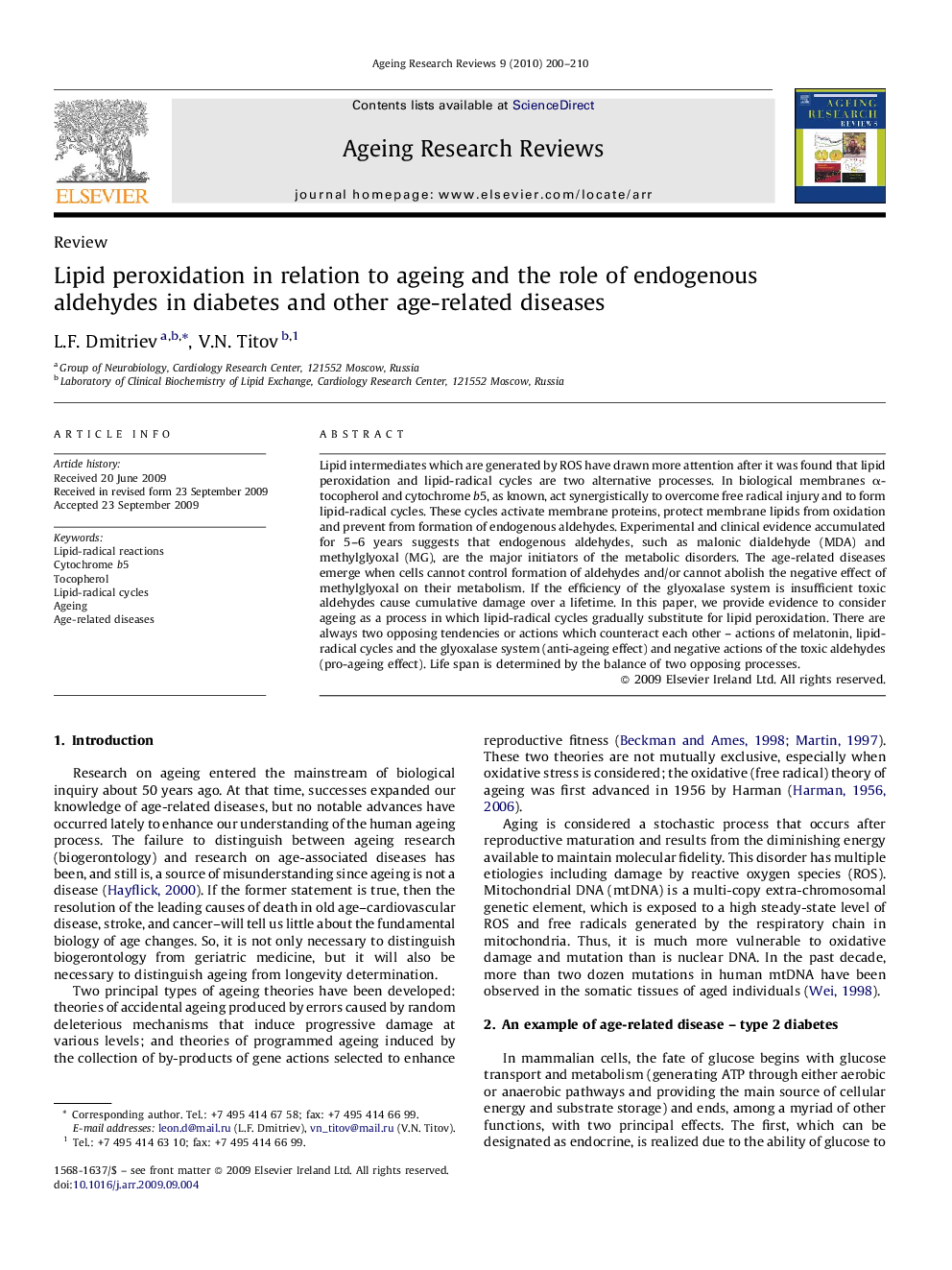| کد مقاله | کد نشریه | سال انتشار | مقاله انگلیسی | نسخه تمام متن |
|---|---|---|---|---|
| 1902419 | 1045744 | 2010 | 11 صفحه PDF | دانلود رایگان |

Lipid intermediates which are generated by ROS have drawn more attention after it was found that lipid peroxidation and lipid-radical cycles are two alternative processes. In biological membranes α-tocopherol and cytochrome b5, as known, act synergistically to overcome free radical injury and to form lipid-radical cycles. These cycles activate membrane proteins, protect membrane lipids from oxidation and prevent from formation of endogenous aldehydes. Experimental and clinical evidence accumulated for 5–6 years suggests that endogenous aldehydes, such as malonic dialdehyde (MDA) and methylglyoxal (MG), are the major initiators of the metabolic disorders. The age-related diseases emerge when cells cannot control formation of aldehydes and/or cannot abolish the negative effect of methylglyoxal on their metabolism. If the efficiency of the glyoxalase system is insufficient toxic aldehydes cause cumulative damage over a lifetime. In this paper, we provide evidence to consider ageing as a process in which lipid-radical cycles gradually substitute for lipid peroxidation. There are always two opposing tendencies or actions which counteract each other – actions of melatonin, lipid-radical cycles and the glyoxalase system (anti-ageing effect) and negative actions of the toxic aldehydes (pro-ageing effect). Life span is determined by the balance of two opposing processes.
Journal: Ageing Research Reviews - Volume 9, Issue 2, April 2010, Pages 200–210